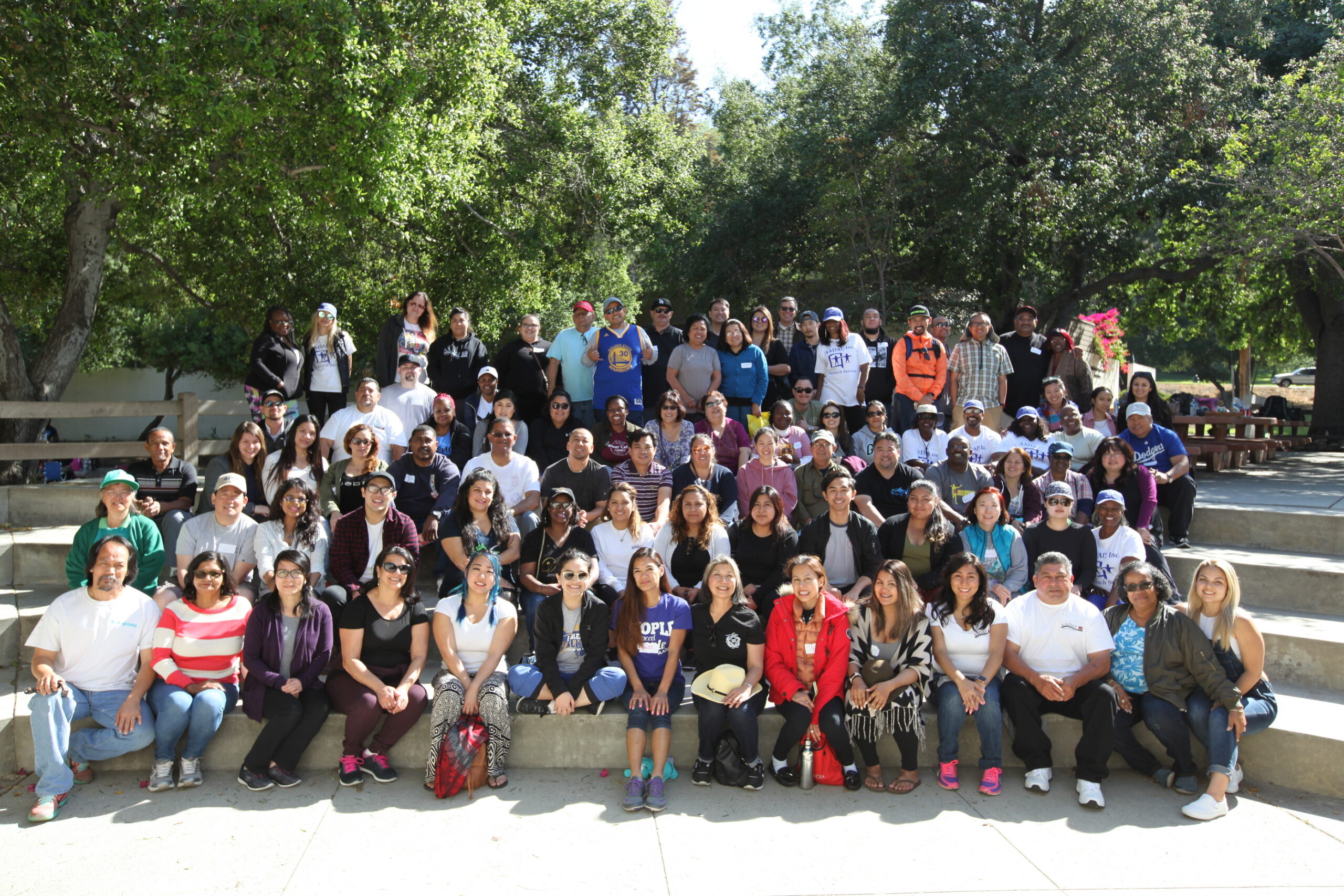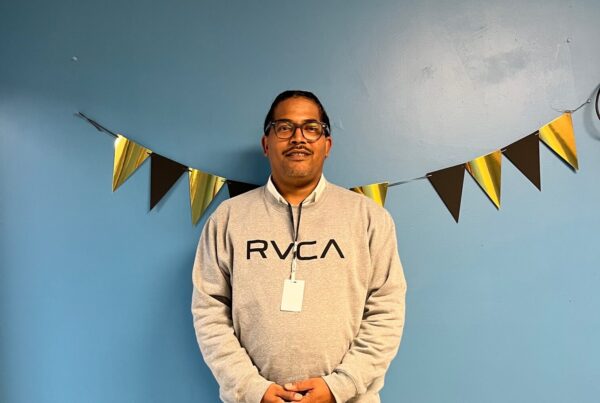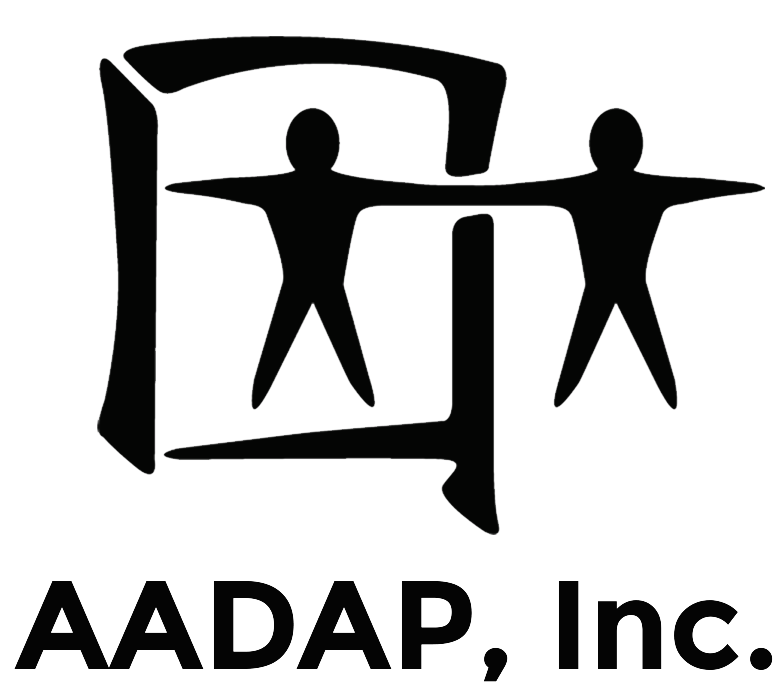 Part 3: The Present, 2000s-2022
Part 3: The Present, 2000s-2022
By Mike Watanabe, President Emeritus, MSW, LHD
The new millennium brought a period of growth unlike any earlier periods. These two decades brought new programs that were coupled with new real estate acquisitions that solidified the programs and the agency’s capital profile. This growth required new administrative, fiscal, and technological improvements to meet the new demands.
In 2000, AADAP was awarded a new youth treatment contract for residential and outpatient treatment. This was a first for the SUD field and was led by the Substance Abuse Prevention and Control’s (SAPC) Director, Patrick Ogawa, our former CEO. We searched for over a year and were very fortunate to finally find a great facility in Miracle Mile on Olympic in 2002 and called it the Olympic Academy (OA) to give it an appropriate vision for the residents. Led by Glenn Andres and Byron Shinyama initially and Patty Abrantes later, the program was tremendously successful for 16 years. It had a strong record of success, even drawing kids from across the country. It graduated 30 youth and served over 500 during its time. It had to be closed due to the County’s change in funding policies.
The Youth Outpatient site was housed at a leased site in Gardena. The program flourished in the subsequent years. It developed a Drug Court Program in the Inglewood Juvenile Court. It added an adolescent mental health program in 2005 through a contract with the Department of Mental Health (DMH). In 2004, the owner put the building on the market, and to control our space, we purchased it.
The Outpatient Unit moved from our original site in 1994, when we bought the new site on Martin Luther King Blvd. Glenn Andres and Eunice Asis established the Special Deliveries program a 6 days/week day treatment program, providing extensive treatment services through substance abuse intervention, health care, and ancillary services to pregnant and parenting women. The Department of Children and Family Services (DCFS) was the Special Deliveries Day Treatment Perinatal Program’s top collaborator and source of client referrals. It then branched out to the Probation Offices (PO’s), Department of Public Social Services (DPSS), and other Community Based Organizations (CBO’s). Later, the clientele expanded, serving women involved with the Welfare to Work Program/CALWORKS, where DPSS offices.
The other major program that developed was the Inglewood Superior Court’s Drug Court Treatment Program. This highly successful program was our contribution to a national pilot program in 1997. James Stinson pioneered this program as a Coordinator in Outpatient, and the growth over the next twenty years was terrific, as we graduated two classes a year of 20 to 25 very well-grounded clients. This program was distinguished by its sophisticated data collection system that demonstrated it effectiveness nationally. We used the Bronson House to provide protected housing for Drug Court clients in later years.
By 2004, the City’s redevelopment plans had finally reached their acquisition phase. AADAP’s Board member, now Chairman Mike Yoshiba, an expert in redevelopment law negotiated an extraordinary deal that was a windfall for AADAP and set the stage for greater acquisitions. There were no remaining large facilities in Crenshaw, so an Inglewood property called the Jim Goodman Building to better serve the Inglewood Drug Court program. Additionally, AADAP purchased a facility on the Wilshire District near the Olympic Academy, where we housed the Employment Access Program and a portion of outpatient counseling that we called the Wilshire Building.
The Special Deliveries Program was accompanied by a sober living house called the Satellite House. This provided a safe, substance-free environment for those who could not maintain their sobriety without this support. It enabled women with young children to be house as they attended the rigorous treatment regimen. We leased a house for this purpose and in 2004, we purchased it. We currently call this the St. Elmo’s Facility and it provides transitional housing for women and children.
In 2001, AADAP was contacted by Ozie Hunt regarding the donation of a house. He was the Chief of Staff for Councilwoman Pat Russell and helped to support the renovation of the facility, zoning variances, building permits, and acquiring a Conditional Use Permit (CUP) for the facility. Ozie had a donated building in Bel Air he proposed to move to Crenshaw. As promised, he acquired a lot on Bronson Ave. and moved the building in one night. After two years to put the house back together, he got a City CUP and prepared it for occupancy in 2003. This house provided a second sober living house for the program, which is now called the Bronson House.
The Outpatient Unit also initiated outreach efforts to combat HIV infection with IV drug users. In 2006, AADAP was funded to establish this effort as a separate harm reduction program. Subsequent grants and contracts have increased the size and scope of its harm reduction repertoire to include STD prevention products, injection kits, gift card incentives, and opiate antagonist Naloxone. The HIV Outreach staff have literally saved lives on the street by administering Naloxone and reviving OD victims. In 2020, we broadened its name to the Health Intervention Program (HIP) and were awarded a large contract to provide rehousing services for this street, and a largely unhoused population.
Outpatient Unit also grew to include Long Beach in 2015. The agency providing treatment to the Long Beach Drug Court had closed, and noting our success in Inglewood, SAPC asked AADAP to serve the displaced clients. This emergency response evolved into a fully licensed and certified treatment clinic in leased space. The Long Beach Superior Court has become a strong partner, as it has found our TC program to be a great resource to support its program.
In 2007, the historic building on the corner of Crenshaw, once the home of Brand Motors Ford in the 1960s and aired nightly on TV became available. It subsequently housed a cable TV company, the Urban League, and other well-known companies. This 23,000 square foot iconic building was the last remaining large facility in Crenshaw, we were able to win the offer. This enabled us to relocate the Administrative Staff, Community Prevention, and Youth and Family Programs all under one roof. It relieved the pressure for space and enabled the TC to grow.
When the building was ready, Community Prevention and Youth and Family Programs moved in to the new space. The transition into the 21s century, marked significant changes with SUD prevention. Community Prevention (CP) Program adopted its name with this new concept and actively pivoted to advocate for local policy change using evidence-base practices, assessment, and evaluation as primary strategies. In the two decades following, CP was instrumental in working with South Bay community youth and adult coalitions in the successful passing of over 18 municipal ordinances. CP established partnerships with several the State Universities to host the internship program Project Choice on HIV and STI harm reduction through safer sex practices.
The second arm of the Prevention Unit was the Indochinese Youth and Community Center (IYCC). After 2000, IYCC continued in its broad programs of social support for these refugee communities who needed assistance with housing, food and job stability. Asian outreach services include treatment referrals, employment services, food stability through Cal Fresh. The Saturday Tutorial program was wildly popular with the parents, who were desperate to see their children do well in school for the benefit of the family. IYCC expanded educational services to address problem gambling issues through training and technical assistance. IYCC establish a strong footprint in Long Beach and collocated with Outpatient there.
Youth and Families Program (YFP) began in 1985 as a National Youth Program Using Minibikes (NYPUM) in the Prevention Unit. It’s success and growth led to the decision in 2008 to establish a separate Unit and calling it YFP at the time we purchased the Corporate Building. YFP operated the L.A. bridges program from 1996 to 2008. In 2007, the Mayor’s office launched the Gang Reduction and Youth Development (GRYD), and we were successful in capturing funding to that highly regarded and well documented gang prevention program. Through all of these three major programs, Jose Esqueda and the YFP staff developed a fine reputation for engaging youth in positive social activities and using those to provide individual, group, and family counseling. They provided alternatives to gangs while ensuring the youth improved their social functioning through tutoring, community engagement, and navigation for ancillary services. YFP is known for gathering hundreds of youth and families for their community events.
When others moved out, the TC was able to spread out to occupy the whole building. They were no longer “The Back”. This was also about the time Al Mizuno was bringing his career to a close and retired. He had been the major leader in the TC and the agency. He was a pillar of TC treatment through two decades in the 1980s and 1990s and left generations of graduates and staff using his Al-isms. The additional space enabled James Stinson to embark on a plan to increase the size and scope of the treatment population. He expanded the TC to 35 beds and initiated the lengthy process of adding them to the facility license by the State and the contract changes with the County. The result was the ability to increase the number of women and their children.
AADAP’s employment and training services started in the 1970s to enhance the drug treatment services. Teams of staff provided these smaller services funded by a variety of legislative support as a part of Outpatient Unit. By 2000, under the leadership of Daisy Asis, the programs were growing with substantial funding from City, County, State, and Federal sources to support a separate Unit, and Employment Access (EA) was formed. A large site was leased in Santa Barbara Plaza and services were provided in close coordination with the treatment units, but participants were recruited from the community beyond those clients. In 2004, EA went to the Wilshire Building and continued their work.
In 2014, in a rare move by the City, the WorkSource Center contracts were re-solicited, and the Unit was awarded a contract. This was a major achievement in future sustainability. The award for the West Adams district, and EA was moved to the corporate Office. Since that time, over the past seven years, the (WSC) has earned top ratings among other centers. EA has since drawn high marks and an excellent reputation for developing very productive employment recruitment agreements with Kaiser, LAX, So-Fi Stadium, United Way, and other top employers. In 2019, we were awarded a grant from the Department of Labor (DOL). This was a major accomplishment, as our Federally Approved indirect Cost Rate for DHHS had expired, and this enabled us to continue receiving one.
The two decades of the new millennium have been mostly blessed with terrific success. The last few years, however have been challenged with two major challenges. The first was the unintended consequences of Obamacare on SUD treatment contracts. In its implementation, the County made the decision to move our funding to Drug MediCal (DMC). The policies that were adopted has resulted in the closure of Olympia Academy and the liquidation of the Wilshire Building to fund the transition, as we and others in the field adapted to the change to a radically new DMC billing system and rates. It was an existential threat, but we overcame it after three years. We were helped by the strong response of Aris and his IT team that responded excellently to SAPC’s Sage system. We benefitted by the addition of Dr. Yelba Castellon-Lopez, Medical Director and Angela Bartolome, LCSW and Clinical Director.
The second blow was the COVID pandemic. The impact on our ability to retain clients, protect staff, provide cash flow, and generally continue to sustain a profitable business was extremely daunting. However, the strength of our Management Team with new medical staff met and responded well to everything thrown at us. Dean Nakanishi led an assault team to counterattack every positive case and protect every staff and facility.
These crises would not have been as well without core organizational strengths developed during the twenty-year period. AADAP is proud to be an Apple based organization. AADAP upgraded its Internet connection to enterprise level when people still had dial ups or DSL. AADAP also established its website and built a network infrastructure for computers/printers which played a crucial role as SAPC moved to electronic health systems and digital delivery of services. Because AADAP invested in making sure the technology infrastructure was up to date and stable, we were able to develop our Electronic Health Record (EHR) system required by the Affordable Care Act (Obama care). As other agencies were waiting on state and county for direction, we initiated our own path in EHR. When SAPC developed their EHR, they had to link those agencies with their own systems. Those choices shape our current state of success in the age of digital health records. The recent pandemic also tested AADAP’s technological capability. It was strategic for AADAP to invest in cloud network systems as early as 2012 because this enabled the agency to seamlessly transition work and delivery of services from a remote location. As telehealth became the norm during COVID, we were ready.
Our core operations in Human Resource, Risk Management, and Corporate Compliance has grown in sophistication over the twenty-year period under the leadership of Dean Nakanishi. The Personnel Practices are now reviewed by outside HR professionals. Risk Management is now reviewed by outside attorneys. In the past year, we have reorganized corporate compliance with a management level position over matters previously left to Program managers.
Dean also embarked on a major goal to achieve accreditation by the Commission on the Accreditation of Rehabilitation Facilities (CARF). This required the standardization of all Units regardless of contract requirements to a new level of data driven accountability. All Units were required to document practices that met CARFs high standards. All Programs had to conduct customer satisfaction surveys, data driven self-evaluations, outcome evaluations, and other measures of quality assurance. We accomplished the first three-year certification in 2018, and the second in 2021.
The two decades were also guided by an excellent Board of Directors. From Chairs Karl Nobuyuki, Sue Oda-Omori, Ken Kasamatsu, Danny Torii, and now Mike Yoshiba, they supported every scary facility acquisition, every deficit budget, every fundraising bet, our response to every challenge, and a very generous retirement send off for yours truly. Most of all, they supported my succession plan that was years in the works. We’ve had the smoothest and most successful transition in agency leadership to Dean Nakanishi that I could hope for. Aside from all the new energy and new initiatives he has launched, in ten months, he has been appointed to the L.A. County Commission on Alcohol and Other Drugs on July 14th.




